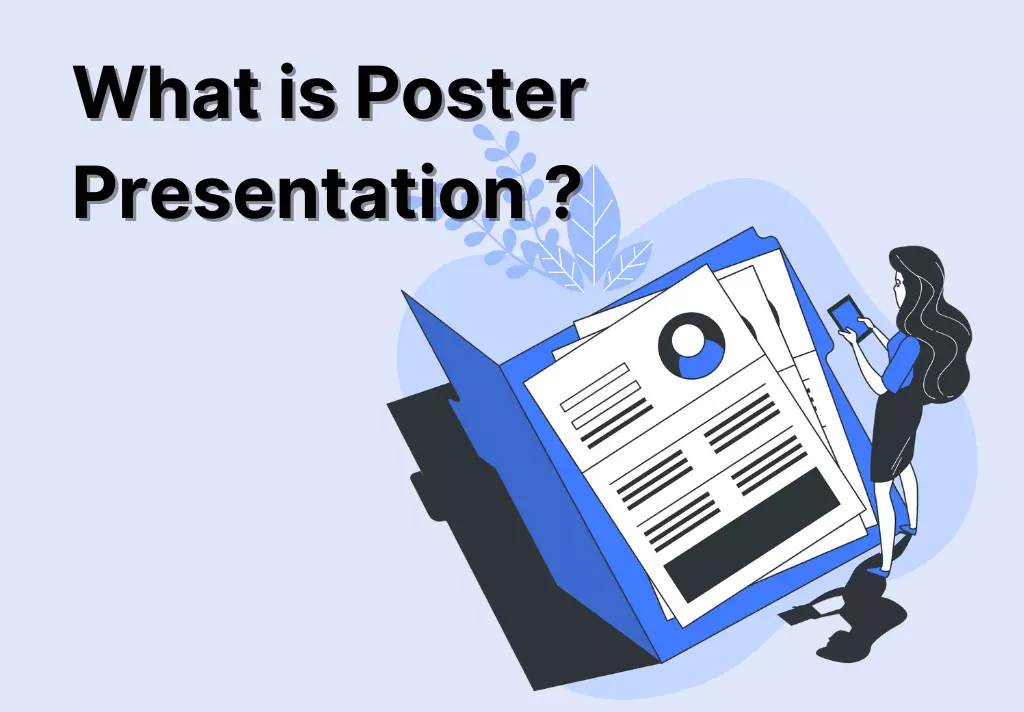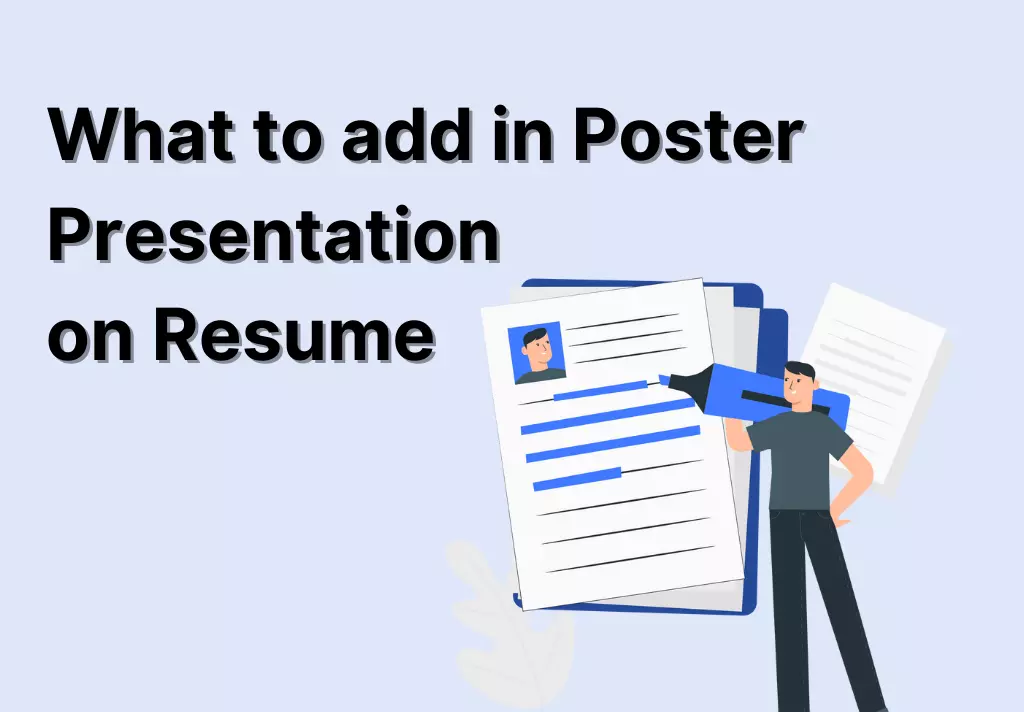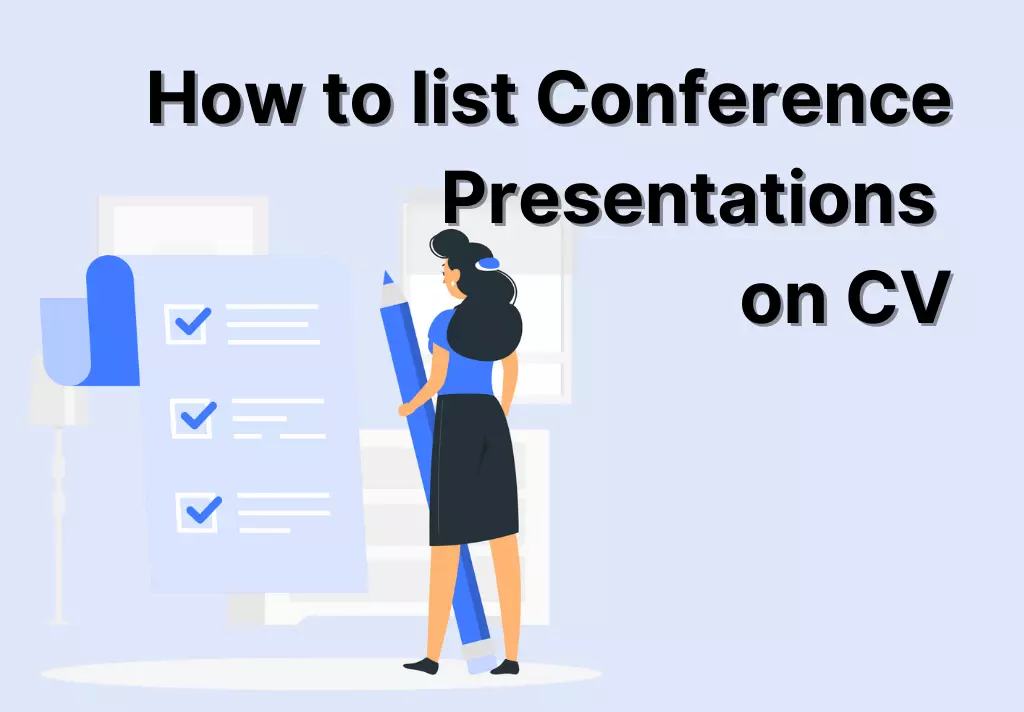A poster presentation is a relatively straightforward approach to express your research or understanding of the material. It usually consists of a poster and a brief (no or more 2 minutes) clarification. We will tell you how to put poster presentation on resume.
When conducting research, you will frequently build on the work of others. Occasionally, you will borrow an idea, fact, or phrase from another person’s work, such as a book or article. Suppose you include such suggestions on your poster.
In that case, you must mention your sources so that other researchers and authors can credit you and people can trace your research or acquire the source material. The same can be said for different sources, such as photographs or other visuals that you may include in your poster’s design.
Table of Contents
What is a poster presentation?

A poster presentation presents research information in the form of a paper poster the conference participants can view during a congress or summit with academic subject importance placed.
How can you include a poster presentation in your resume or curriculum vitae?
What’s the best way to format it? Do you consider all the presentations? What if you weren’t the one doing the presenting?
That is how you do it
How to put poster presentation on resume?
Create a “Presentations section” in your document.
Make a section for presentations on your CV if you don’t already have one.
If you have many of them, presentations should be a subsection of the publications section.
You should include a section on presentations and publications following your education, work history, and research experience.
Include the names of the authors.
Put the authors’ names in the same order as they appear on the poster. The last name should be written first, followed by the first and middle names.
Your name should be bolded, and commas should separate words. If it’s not you, circle the presenter. Put a period in the end.
Add a title to the poster.
Fill in the poster’s title precisely as it appears on the sign. Add a period at the end of this section.
Make a note of the name of the conference or event.
“Poster presented at:” should be followed by the conference name and a semicolon. If the conference’s title includes a date, have it as well.
Include information about the conference’s location.
Last but not least, the poster should consider the conference’s venue.
Suppose your conference took place in the United States, including the city as well as the state’s shortened name. If it was an international meeting, include the name of the country.
In chronological order, list the much more valuable poster presentations.
Do you wish to make a resume or a curriculum vitae? The phrases resume and CV is interchangeable in some countries.
Resumes are career summaries in the United States. In contrast, CVs are academic biographies covering all your experiences and publications.
Select only the most relevant presentations to produce an American-style CV. Alternatively, make a list of all of your poster presentations.
Also, include your presentations in chronological order, and don’t repeat the same lecture.
Is it necessary to cover all poster presentations?
You don’t have to include all of your presentations if you’ve had a long career. Presentations in lesser events, such as department conferences, are significant.
If you’re starting your job, include as many presentations as feasible.
What about giving a speech?
Make a distinction between your oral and poster presentations. Create two sections on your resume/CV: one for poster presentations and another for oral presentations.
Oral presentations should be formatted similarly to poster presentations.
Why put a poster presentation in resume
If you used a poster for an oral presentation, you should only include the oral presentation once. Meeting signs contain those presented in this manner and followed up with a publication.
One advantage of displaying a poster is that it allows you to try out multiple ways of communicating a subject and see which one is the most well-accepted. You may enhance your capacity to communicate verbally while also honing your ability to show information visually in a straightforward manner.
On their own CVs, graduate students and post-docs frequently cite poster presentations that their students gave. That does not assist them in advancing their careers in the long run (no one gets a lifetime achievement award for successfully sending a bunch of undergrads to conferences).
In the short term, however, having a successful track record of your students presenting at conferences might be a vital sign of being an active mentor for individuals searching for their first professor position (which can be a quality that hiring committees may value).
However, if there is no value to career advancement, it may not be worth it to include it on your CV in the long run.
Also read: How to block someone on LinkedIn without visiting their profile
What to add in poster presentation on resume

The methods below will show you how to write a CV that includes your presentations, public speaking events, and other conferences:
Make a section for slideshows.
To begin, make a section in your CV dedicated to listing your presentations. For example, include your work experience, educational background, and any other relevant information about the job beneath your presentations (like volunteer experience or paid internships).
Start with the most important presentation.
After that, put the most important presentation first. If you have many presentations, for example, list the one that most closely relates to the job description. Then, beneath the first, insert any more presentations that emphasise your expertise and industry knowledge.
Italicize the title of the presentation.
Then, in italics, write the title of the presentation. If your presentation has a long title, strive to condense it into a shorter version to convey the main points.
List the conference’s name and date.
List the name and date of the conference or event where you presented your presentation beneath your title. Include the month and year in your list. Additionally, rather than listing your presentations in reverse-chronological order like your career history, list them depending on what is most relevant to the position.
Explain the presentation topic with examples.
Provide some brief examples or details about the presentation topic under the title. Include, for example, the most important points you made during your presentation. Include the major theme you addressed in many presentations.
Make a list of articles and presentations that are connected.
Finally, if you have any publications relevant to your presentations, such as academic articles, research journals, or other media, do them in this paragraph of your resume. This displays your dedication to your profession even more.
How to list conference presentation on CV

- Relating your public speaking experiences to jobs that demand you to attend regular meetings, seminars, and presentations.
- List any speeches you gave as part of a project or event to educate an audience on a topic relevant to the job description.
- Emphasise presentations that establish you as an industry leader or an authority in your line of work.
- Guest speaking at special events to present research, data, or other innovative projects connected to new advancements in your line of work.
F.A.Q.s
How to Include Research in a Resume
Resumes are essential documents for all kinds of application packages — jobs, scholarships, grad school, etc. Your resume should fit within the total box highlighting your achievements in a concise manner. It is critical to personalize your CV to the position or program you are applying.
Making the most of your space
Unless you have a high number of presentations or publications to list, a resume should be no more than two pages long in general. To appear more impressive, avoid the temptation to add extra “stuff” to your CV. Determine what was terrific about the relevant experience you have
(for example, demonstrated independence, innovation, grit, or tenacity; helped improve ways of doing things in the lab; we’re given additional responsibilities as time went on; etc.)
What should I do with my experience?
Resumes are usually formatted such that your most recent position appears first. If you’re applying for a research position, though, don’t list working at Dairy Queen first. Consider using some of the following parts instead:
- Academic Achievements
- Experiential Learning
- Work Experience/Employment is a term that is used to describe a person’s work
- College Extracurriculars
- Journals or Speeches
Periods and Job Titles
Make a sensible choice (sometimes HR titles do not)
Check that the reviewer can grasp the job title.
Sponsorship
You can make a list of different funding sources.
Discuss your unique financing source with your mentor. Grants sponsor many research studies. Thus it’s critical to mention the funding source appropriately.
Experiences
Take some time to think about your research experience and how it has helped you grow and mature as a researcher. When you’re thinking about your experience, ask yourself these questions.
When possible, use exact numbers or other qualifiers to demonstrate how much work, effort, independence, or persistence you had.
Last but not least
- Be aware of your target market.
- Accurately measure
- Organize your space to suit your needs.
- Because most files supplied online use professional terminology – the reviewer will notice if you named a file “Better Resume.”
- In the file name, provide your first and last names, as well as the position title.
- That ensures that the assessor knows who you are and what you seek before starting the file.
Conclusion
To give credit to other researchers and writers, you must cite your sources. Use the style specified in the abstract/poster standards or consult your research advisor for more information. If your poster comes with a handout, you can list your references on it – if not, you should list them at the bottom of the poster.
Thank you one more. Please return soon for more line charts on your suggestions. Keep the interaction going. 🙂
Keep the conversation going

Hi, i’m Akash shaw creator of Adsvast agency , Hello, I am a perfectionist with deep love for aesthetics,
a graphics designer with expertise in logo design and branding.
My only goal with Notamartwork is try to help others to freelancers to get jobs and learn how to do freelancing.
